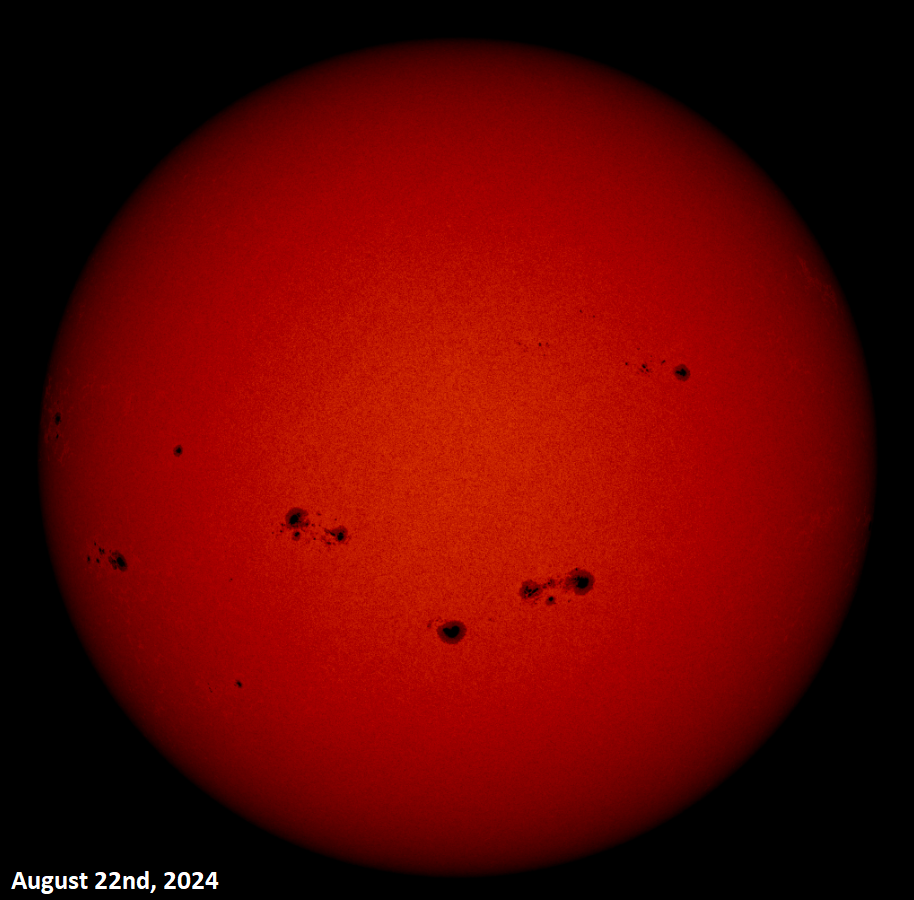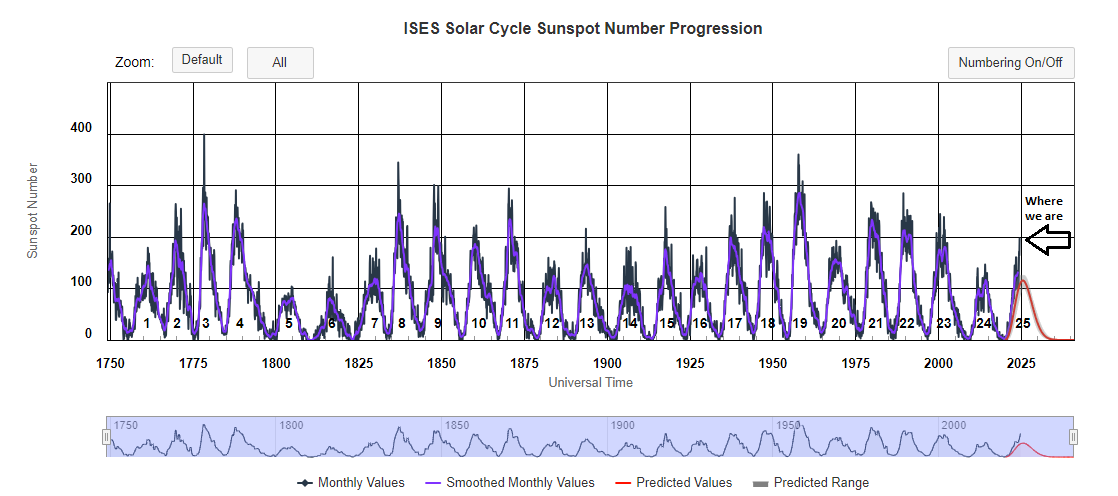11:20 AM | *Solar cycle 25 continues to head towards its maximum phase and it looks like this may be the most active month since the peak of solar cycle 23 in September 2001*
Paul Dorian
Current solar image featuring numerous sunspots as solar cycle 25 heads towards its maximum phase. Helioseismic and Magnetic Imager (HMI) “Intensitygram” image courtesy NASA/SDO
Overview
Solar cycle 25 began in late 2019 and is expected to continue through much of this decade with its maximum phase potentially being reached during the first half of 2025. This month of August has been very active in terms of the number of sunspots and it is quite likely to turn out to be the most active since solar cycle 23 peaked in September of 2001. Solar cycle 25 has exceeded most expectations in terms of the number of sunspots and is on pace to be of similar strength as solar cycle 23. The previous solar cycle, #24, was the weakest in more than a hundred years since solar cycle 14 peaked in January 1907.
Solar cycle sunspot number progression is shown on this plot back to the 1750’s. The current spike in monthly sunspot number (indicated at far right by arrow) is at the highest level since solar cycle 23. Plot courtesy NOAA/Space Weather Prediction Center
Details
Extensive recording of solar sunspot activity began around 1755 and this current cycle is the 25th since those observations began. Many predictions of solar cycle 25 were that it would continue on a downward trend in terms of overall strength that began with the peak of solar cycle 21 in late 1979. The current cycle, however, has exceeded expectations and is on pace to be equivalent in terms of number of sunspots to solar cycle 23. Solar cycle 25 is closing in on its maximum phase which may take place in early-to-mid 2025 and for the second month in a row, the monthly average sunspots number is cruising toward a 20-year high according to spaceweather.com. In fact, the current monthly-average sunspot number of around 230 would eclipse every month since September 2001. With the solar maximum phase still potentially still several months away (and you really don’t know when the max actually occurs until after the fact), there is the chance that upcoming months will be even more active than these past two.
This long-exposure photo featuring the northern lights and Perseid meteors was taken early On Monday, August 12th in the Blue Ridge Mountains of North Carolina (courtesy Todd Bush, spaceweather.com)
One of the benefits of an active sun at this stage of solar cycle 25 has been an explosion of auroras. The most recent burst of northern lights took place earlier this month and happened to coincide with the annual Perseid meteor shower that reached a peak in the pre-dawn hours of Monday, August 12th. Multiple coronal mass ejections hit the Earth during the weekend of August 10th/11th...just before the peak time of the Perseid meteor shower. During the most active time of the mid-August solar storm, auroras were spotted in 30 states as far south as Texas. A few months before the mid-August outbreak of northern lights, another coronal mass ejection hit the Earth’s magnetic field on May 10th sparking the biggest geomagnetic storm in more than twenty years that was classified as an extreme category “G5” event. During this event, auroras were seen by many people for the very first time in their lives as far south as Puerto Rico and Mexico.
To all sky watchers out there, stay tuned...more auroras are in the cards as we head towards the maximum phase of the current solar cycle #25.
Meteorologist Paul Dorian
Arcfield
arcfieldweather.com
Follow us on Facebook, Twitter, YouTube
Video from yesterday which includes a brief discussion on recent solar activity:



